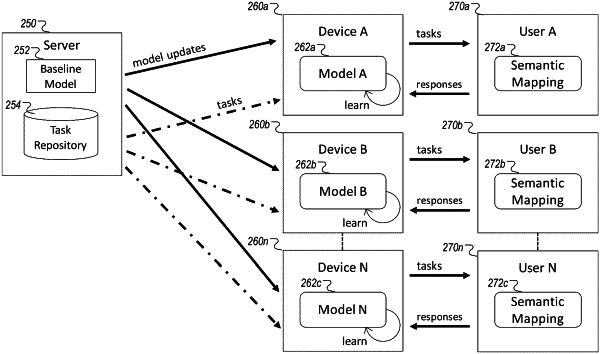| CPC G06F 30/12 (2020.01) [G06F 30/27 (2020.01); G06N 20/00 (2019.01)] | 20 Claims |

|
1. A method for generating new product designs comprising:
receiving, from a user device of a user, a request for a digital component for presentation at the user device;
receiving a data set of user-provided information regarding a particular product design;
generating, based on the data set of user-provided information, a visual representation mapping design factors that represent subjective characteristics of the particular product design to a continuous shape representing potential product design geometries;
segmenting the visual representation into a plurality of segments based on values of the design factors;
selecting a segment of the visual representation that contains less than a threshold amount of data points from the data set;
selecting a digital component that solicits information from the user;
dynamically altering, based on the selected segment of the visual representation, a presentation of the digital component such that the dynamically-altered digital component solicits information from the user about the segment of the visual representation that contains less than the threshold amount of data points;
distributing, for presentation at the user device, the dynamically-altered digital component;
obtaining, from the user device and by way of a feedback mechanism, feedback information regarding the segment of the visual representation that contains less than the threshold amount of data points; and
modifying a value of a given design factor of the particular product design based, at least in part, on the feedback information obtained from the user to create a modified product design.
|